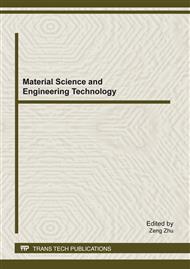p.375
p.383
p.392
p.398
p.402
p.407
p.413
p.419
p.427
The Temperature Control Simulation on Concrete Dam Simulation Analysis of the Concrete Block in First-Stage Water Cooling
Abstract:
Control the concrete temperature to reduce the temperature cracks is one of the main tasks in the concrete dam construction. Water cooling is the most effective temperature control measure of concrete dam. In connection with the concrete temperature field of cooled computational problems, according to the water and heat exchange between the concrete and cooling water pipes, The cooling pipe is considered as the effect source of heat, and the effect of the water cooling is considered on average meaning, and then the approximate temperature field can be obtained through the finite element.
Info:
Periodical:
Pages:
402-406
Citation:
Online since:
February 2012
Authors:
Price:
Сopyright:
© 2012 Trans Tech Publications Ltd. All Rights Reserved
Share:
Citation:


